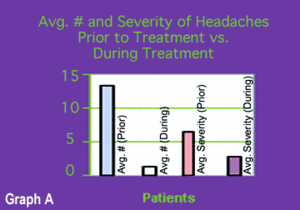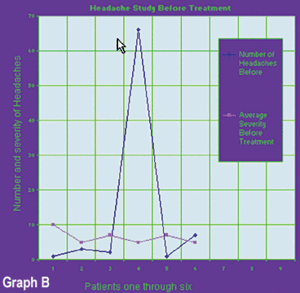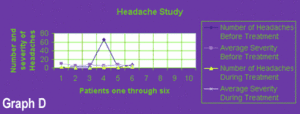Some doctors thrive in a personality-based clinic and have a loyal following no matter what services or equipment they offer, but for most chiropractic offices who are trying to grow and expand, new equipment purchases help us stay relevant and continue to service our client base in the best, most up-to-date manner possible. So, regarding equipment purchasing: should you lease, get a bank loan, or pay cash?
A Migraine Trial
Abstract
Vascular headaches are caused by a compromise of the sympathetic nervous system, specifically where those sympathetic nervous system nerves pass through the foramen lacerum. Vascular headaches have been classified into several types: common (without an aura); classic (with a preceding aura, usually visual); complicated (those that present with neurological symptoms); and cluster headaches (so named because they present in clusters, with sometimes long periods between episodes).
Regardless of the type, the etiology is the same. The sympathetic nerve compromise is caused by a subluxation at the first cervical/occipital articulation, which narrows the foramen lacerum.1 Chiropractic manipulative therapy at this vertebral articulation relieves pressure on these sympathetic nerves, thus relieving the vascular headache. Among other functions, the sympathetic nervous system in the head controls vascular diameter and dilates the pupils of the eyes via the dilator pupilae muscles.2,3 Pressure on the sympathetic nerves at the foramen lacerum causes those nerves to fire, leading to vasoconstriction of the blood vessels in the head and dilation of the pupils of the eyes; this accounts for the photophobia that many migraine headache sufferers experience. The vasoconstriction of the blood vessels in the head results in hypoxia of those tissues. Hypoxic tissues become acidic and release substance P, bradykinins and histamine,4,5 which cause vasodilation and increased capillary permeability. The vascular system in the head is then flooded with fluid, causing the vascular headache.

The purpose of this study was to evaluate the effectiveness of adjustment of the C1/C0 articulation on vascular headaches.
Review of Literature
A review of the literature failed to find a research study in which the C1/C0 articulation was specifically adjusted. Some migraine headaches studies were found in which the atlas was adjusted. Adjustment of the atlas primarily affects the C1/C2 articulation. These studies did not show particularly favorable results for the relief of vascular headaches.
Method
The male and female subjects had a history of migraine headaches; their ages ranged from seven to 53 years old. The participants were adjusted primarily using an occipital lift (between one and 23 times), an average of 8.5 adjustments. The subjects also received soft-tissue massage at the suboccipital region. A detailed history was obtained. The patients were asked how many headaches they had experienced in the preceding three months, and to rate the average severity of their headaches using a 1-10 visual analog scale (10 representing the most pain they could imagine). Three months after the beginning of the study, the subjects were again asked to record the number of headaches, and to rate their severity on the visual analog scale. At the conclusion of the three-month trial, the visual analog scales were collected. Those participants who experienced no headaches for the three-month period reported that verbally.
Nine patients initially participated in the study; three were dropped from the study, either for failure to properly record their headaches, failure to return for treatment, or moving from the area.
Results
The data was used to generate the following graphs. Graph A compares the average number and severity of headaches prior to treatment with the average number and severity of headaches during the three-month period from the start of treatment for all of the patients. There was a 90 percent reduction in the number of headaches and a 57 percent reduction in the severity of the headaches. Graph B represents the number and severity of headaches before the study on a patient-by-patient basis. Graph C represents the number and severity of headaches during the study for each patient. Graph D combines Graphs B and C.

This study demonstrates excellent success in treating migraine headaches by chiropractic manipulative therapy of the C1/C0 articulation. It does not necessarily prove or disprove the proposed etiology, although it is a reasonable anatomical/physiological explanation. This study indicates the need for a larger study.


References
- Hough D. Cause and treatment of migraine headaches. Dynamic Chiropractic 1999;17(23) www.chiroweb.com/archives/17/23/10.html.
- Barr M, Kieman. The Human Nervous System, 5th edition (1998). J.B. Lippincott, pp. 355-357.
- Moore K. Clinically Oriented Anatomy 2nd Edition (1981). Williams & Wilkins, pp. 849-850, 1021.
- Pizzorno JE, Murray. Encyclopedia of Natural Medicine. John Bastyr College Publication, Seattle, WA, pp. 410, 413.
- Guyton Arthur. Textbook of Medical Physiology (1986). W. B. Saunders Co., pp. 242, 329.
Daniel Hough,DC
Colby Neagley,BS
Ginger Riggins,CA
Jessica Tillottson,CA
Bozeman, Montana



